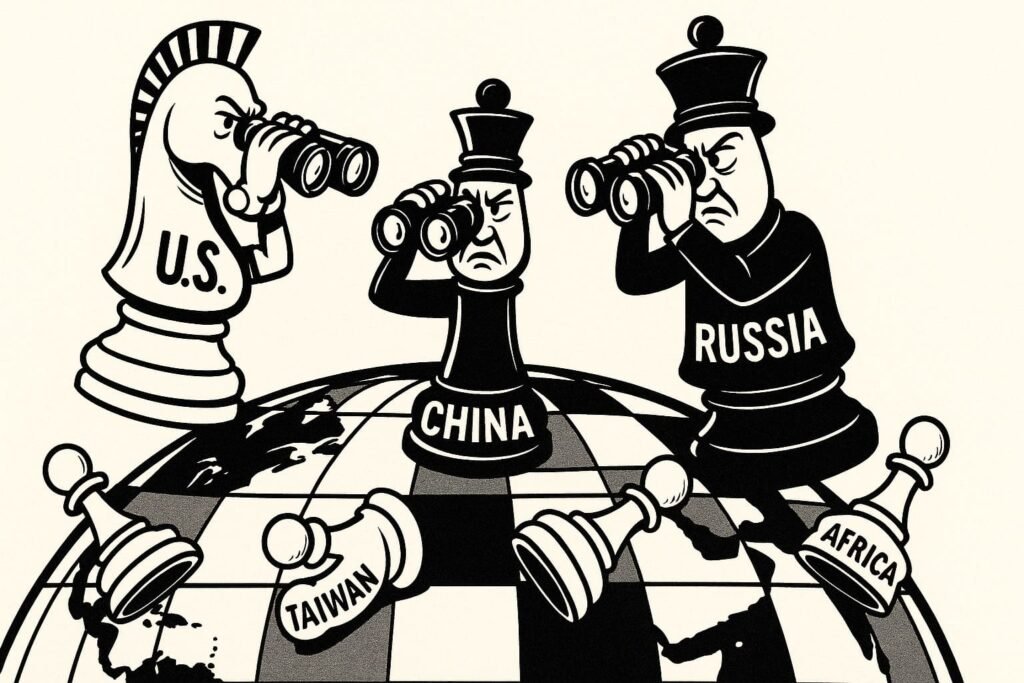Offensive Realism Explained – Why States Always Push for Power
From Security to Aggression
Why do powerful states act like bullies? Because in international politics, being “safe” isn’t enough. If you don’t grow, you shrink. If you don’t dominate, you risk being dominated.
That’s the essence of offensive realism, the international relations theory made famous by John Mearsheimer. Forget talk of “cooperation” or “shared values.” States aren’t moral actors. They’re survival machines — and survival means grabbing power whenever you can.
Table of contents
What Is Offensive Realism?
Offensive realism is a school of thought in international relations that says great powers don’t just seek security — they seek domination.
Why?
- The world is anarchic — no global cop to enforce rules.
- Every state has to rely on itself.
- You can never know other states’ true intentions.
- So the safest bet is to maximise power, not just maintain it.
In short: today’s “defensive” policy is tomorrow’s lost war.
Where It Comes From
The idea comes from realism, the oldest school of IR thought: nations act in self-interest, not idealism.
- Classical realism (Thucydides, Machiavelli, Morgenthau) said leaders seek power because humans are greedy.
- Defensive realism (Kenneth Waltz) argued states mainly want security, not dominance.
- Offensive realism (Mearsheimer) took it further: in an anarchic world, security and dominance are the same thing.
How It Shows Up in Practice
Look around:
- U.S. foreign policy → endless military bases worldwide, not just defence.
- China’s Belt & Road → building debt and ports across Asia and Africa, not just trade.
- Russia in Ukraine → aggression framed as “security,” but clearly about regional dominance.
- NATO expansion → not charity, but locking in spheres of influence before rivals do.
This isn’t ideology. It’s strategy.
Who Benefits? Who Doesn’t?
- Great powers benefit — they secure dominance before rivals can.
- Elites benefit — wars, sanctions, and influence all justify military and corporate contracts.
- Smaller states lose — they get squeezed, invaded, or forced to pick a side.
- Ordinary people pay — with higher taxes, economic shocks, or their lives.
The Consequences
Offensive realism explains why peace never lasts. Balance-of-power politics keeps shifting. Treaties are temporary. Friendships end.
The irony? Every state says it only wants security. But in chasing “safety,” they create the very instability they claim to prevent.
Conclusion
Offensive realism strips away illusions: international politics isn’t about justice, cooperation, or shared values. It’s about power. Always has been, always will be.
What starts as “defence” usually ends up as conquest.
👉 Want the bigger picture on how power really works? Visit our Politics of Power Explainer Hub to see how leaders, corporations, and ideologies battle for control.
FAQ: Offensive Realism
What is offensive realism in simple terms?
It’s the idea that great powers must always seek to expand power to stay secure.
Who created offensive realism?
John Mearsheimer, in The Tragedy of Great Power Politics (2001).
How is it different from defensive realism?
Defensive realists think states just want security. Offensive realists say security requires dominance.
Does this mean war is inevitable?
Not constant war, but constant competition. War is one tool, alongside trade, sanctions, and alliances.
Why does this matter today?
Because it explains U.S.–China rivalry, Russia’s wars, and why global peace is never permanent.
SEO Extras
- Focus keyword: offensive realism
- Meta description: Offensive realism explained — why great powers never settle for security and always push for more power.
- Slug: offensive-realism-explained
DALL·E Prompt
A satirical cartoon of a giant chessboard globe. The U.S., China, and Russia are oversized chess pieces knocking over smaller pawns labelled “Ukraine,” “Taiwan,” and “Africa.” Each big piece holds binoculars, suspiciously eyeing the others. Bold ironic style, clean lines, high contrast, landscape 1920×1080.



